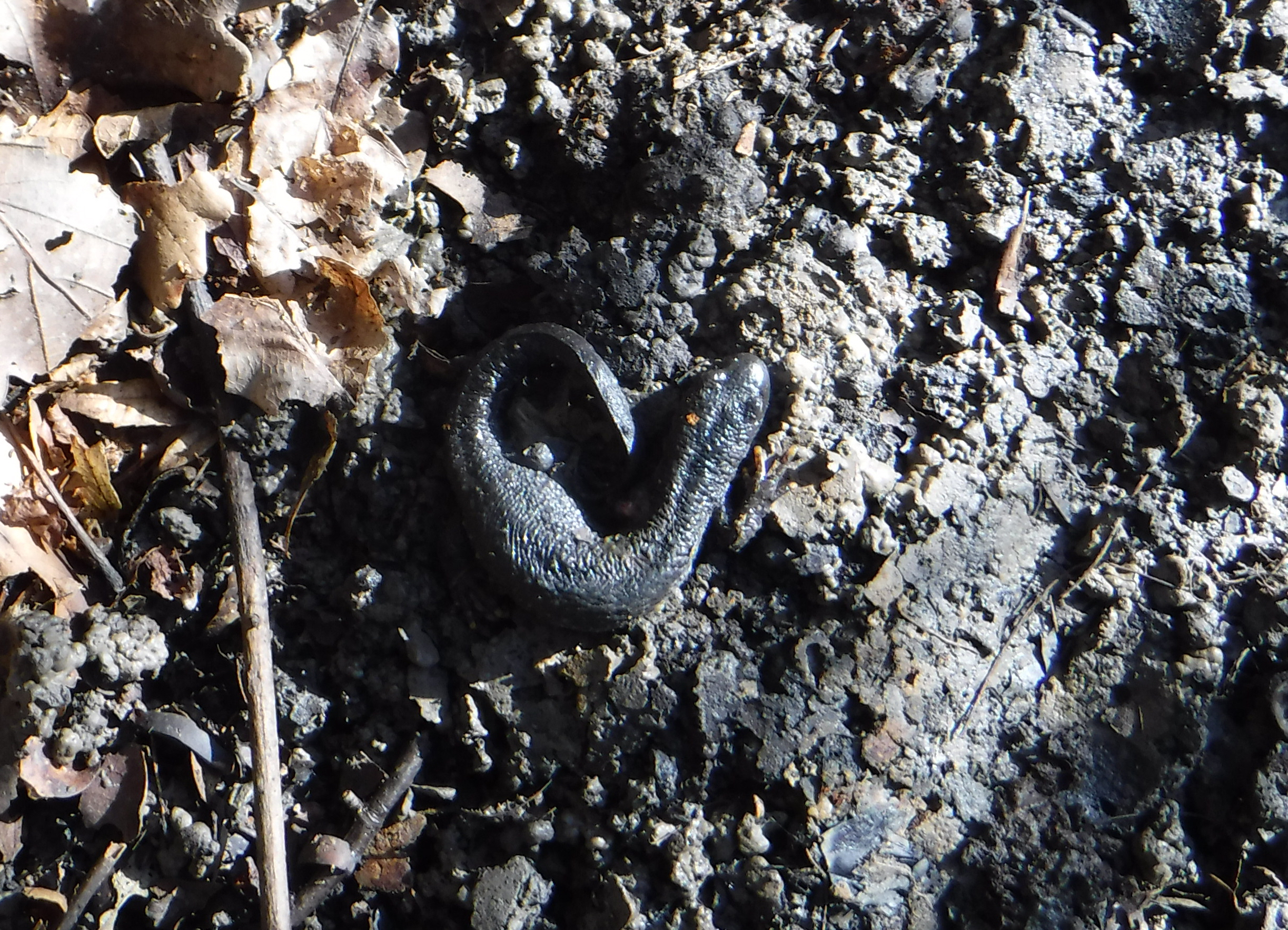
Total monthly rainfall was 69 mm with a maximum daily rainfall of 18 mm on 2nd February; altogether there were 13 days with measurable rain, and 67.5 mm fell during the first ten days of the month. There were also 13 days when cloud-cover reached 100% for at least part of the day.
Temperature on the warmest days was 18°C on the 26th and 27th February, whilst on the coldest days it was 4°C on the 1st and 2nd. There were 9 days with overnight frost, and ponds were frozen on the 3rd, but melted during the 4th. Winds were also gusting strongly from the 4th to the 9th, culminating in gales on the 9th, when many branches and one goat willow came down. During that time there was a significant windchill, otherwise February was an unusually mild month. We awoke to a light dusting of snow on February 1st.
-
 Dog’s mercury (25th Feb)
Dog’s mercury (25th Feb)
Dog’s mercury (25th Feb)
Dog’s mercury (25th Feb)
-
 Great crested newt (27th Feb)
Great crested newt (27th Feb)
Great crested newt (27th Feb)
Great crested newt (27th Feb)
-
 Peacock butterfly (26th Feb)
Peacock butterfly (26th Feb)
Peacock butterfly (26th Feb)
Peacock butterfly (26th Feb)
-
 Spring usher moth (6th Feb)
Spring usher moth (6th Feb)
Spring usher moth (6th Feb)
Spring usher moth (6th Feb)
https://www.kentfieldclub.org.uk/news/little-barton-farm-wildlife-notes/february-2019#sigProIdc7a7b498f6
Wild birds which visited us during the month were a collared dove on the 6th February, followed by 2 grey-lag geese on the 7th, accompanied by 22 Canada geese. On the 9th we saw about 50 redwings in our woodland-edge trees, and over 80 common gulls on a neighbouring field. We disturbed a buzzard in our woodland ride on the 15th.to bring our species bird-count to 37 for the year so far.
Four new wildflower species bloomed during the month. Wild primrose produced its first blooms along our roadside verge on February 14th; four lesser celandines showed their bright yellow flowers on the23rd, the same day as speedwell started to appear in our fields; then dog’s mercury produced its tiny green flowers along our roadside hedge during a warm, sunny afternoon on the 25th. This brings our wildflower count for the year to 8 species.
Of the insects seen this month, the first butterfly was a red admiral on our sunny gravel drive on the 19th. Our second butterfly of the year was a peacock on a garden viburnum on the 26th. Moths were few and far between, restricted by-and-large to bright sunny afternoons in our woodland. These seemed to be mostly spring ushers, first seen on 8th January. The example shown was taken on February 6th, and clearly shows its amazing camouflage when settling on the woodland floor. The only other moth we identified was an early moth, rescued from a woodland pond with a stick on the 27th, bringing our moth total for the year to 3 species. Remaining insects seen were many honey bees collecting pollen from the viburnum on the 14th, and two buff-tailed bumblebee queens in the woods on the 25th.
Our tree and shrub observations during the month produced the following information: Gorse showed its first flowers on the 10th, unusually late for this event; the elder tree produced its first leaves on the 24th having first opened its buds on the 10th; hazel showed its first leaves on the 26th; there were hawthorn buds opening on the 27th.

